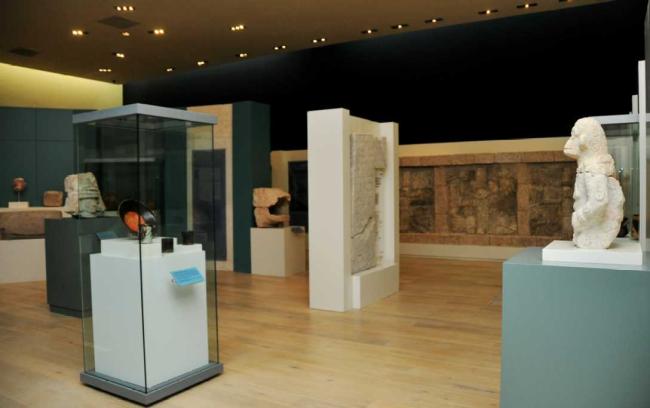
Maya – The Maya, a People in History
For over two thousand years—from 500 BCE until the arrival of the Spanish conquistadors—the ancient Maya achieved extraordinary accomplishments in architecture and urban planning, art, writing, and scientific knowledge, which they shared with other Mesoamerican cultures. Settled in a diverse and generous environment that was at times hostile and unpredictable, they developed agricultural and environmental management techniques that allowed them to sustain massive cities inhabited by thousands.
The Making of the Maya World
The Maya region was inhabited nearly three thousand years before the rise of the Maya civilization. By around 2500 BCE, its earliest settlers lived in small camps and ventured out to hunt, fish, and gather food and materials for their homes and tools. Between 1000 and 2000 BCE, the first complex societies emerged in Mesoamerica—stratified societies where a small elite held political, military, and religious power, while the majority engaged in farming and crafts.
Writing: Political Messages and Divine Decrees
Maya writing arose from the need to record events and dates related to the genealogy, history, achievements, and military victories of their rulers, as well as to document consecration ceremonies.
Calendar and Astronomy: An Obsession with Time
The Maya observed weather and astronomical cycles with great precision and developed a remarkably accurate calendar. This not only governed agricultural activities but also helped them predict celestial events, which they associated with supernatural beings. Priests known as "aj k’inob", the keepers of time, were responsible for organizing rituals to maintain harmony between humans and the forces of nature.
Politics and Power
For over two millennia, the Maya region had no single political center. Instead, it was made up of many independent territories with fluid boundaries, each ruled by a divine king—the "ajaw" of early dynasties, the "k’uhul ajaw" of powerful city-states, or the "halach uinik" in the times closer to the Spanish Conquest. Territories such as Tikal, Palenque, and Copán varied in size, wealth, and strength. The divine lord and his family controlled the kingdom’s social and economic life, as well as the fate of its people.
Warfare: Control and Domination
For the Maya, war was a regular practice used by divine lords (k’uhul ajaw) to gain and maintain power over rivals. Stelae, altars, murals, and ceramics record brutal battles and harsh punishments inflicted on the defeated. Some conflicts were linked to the planet Venus, personified by the celestial warrior Chak Ek’, the “Great Star.” The protective deities of each ruler were also defeated, symbolically, through the destruction of their images during battle or when a sovereign—dressed as a god—was vanquished. Capturing enemies, especially nobles, was highly prestigious. Prisoners were paraded in the victorious city, publicly humiliated, tortured, and sometimes sacrificed to appease the gods.
The Rise and Fall of Maya Cities: A Society in Constant Transition
Throughout their history, the Maya witnessed the rise, splendor, and collapse of many kingdoms and rulers. In most cases, a city's collapse was a long process, unfolding over decades of social and political crisis.
From Subsistence to Exchange
The development of efficient agricultural techniques was key to the growth of Maya cities and the empowerment of their divine rulers. By 100 BCE, cities such as Tikal, El Mirador, and Ichkabal had established systems for producing, acquiring, and distributing food resources, which allowed them to support large populations and undertake monumental architectural projects.
The Built Landscape: Architecture in Maya Cities
Maya architecture is notable for its wide variety of styles. In the early periods, buildings were made with perishable materials, mostly wood and palm. Over time, they constructed solid stone structures, a material found throughout the region that could withstand both harsh environmental conditions and the passage of time. Older homes, palaces, and temples were often buried beneath newer and grander buildings, updated according to regional architectural trends.
Men and Daily Life
Maya farmers and artisans lived difficult lives from childhood. Many children died before reaching adolescence, and those who survived faced harsh living conditions. Human remains from the Maya area reveal that women suffered spinal wear from grinding maize with the "metate", while men showed signs of fractures, osteoarthritis, and ailments linked to long walks and years spent fishing or farming.
Death: The Extinguishing of Breath
For the Maya, as in many cultures, death was accompanied by rituals and ceremonies reflecting the status of the deceased. The Maya term for death was "cham" (to die). When the breath of life left the body, the soul embarked on the "och b’ih", or “road of the dead.”
Maya Concepts of the World and the Universe
The ancient Maya understood the world and the gods through a cyclical conception of time. This worldview explained the existence of previous worlds, created and destroyed by the gods themselves. Humans and their world were divine creations—but imperfect—and thus bound to venerate their creators.
Supernatural Beings
The Maya believed in a pantheon of supernatural beings who shared human traits and emotions. Each had a distinct essence and attributes, but at times they merged or transformed into one another.
The Ballgame: A Sacred War
The ballgame was a ritual linked to the perpetuation of royal power and communication with the otherworld. It evoked creation myths and symbolized the struggle between the underworld and the celestial realm. Through the game—and the ritual death of captives—time was renewed.
The Spanish Conquest
The encounter between European navigators and Maya peoples, followed by military campaigns of conquest, forever altered the region’s political landscape. In the 16th century, the noble Maya families who ruled the "kuchkabalo’ob" (provinces or chiefdoms) were ultimately forced to relinquish power to the Spaniards.


